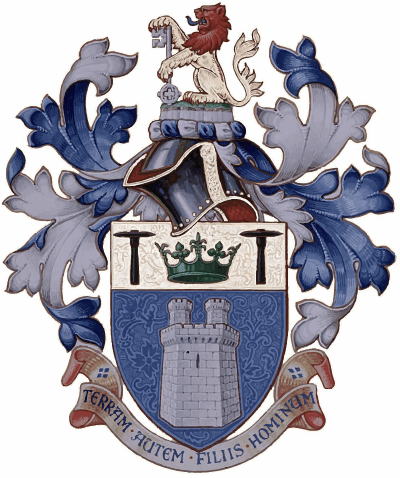The Institute of Quarrying Australia (IQA) has a long and proud history of connecting the extractive industry, supporting networking, and the professional development and careers of those in the industry. The first meeting was held in 1948, this commenced the journey to the modern and supportive institute that exists today.
1948 to 1961 | The Institute of Quarrying, Australian Branch
Australian Branch Committee governed the branch, subject to UK approval of substantial matters.
- 10 September 1948 The first meeting of the Australian Branch was held in Sydney
- 1953 Australian Branch reconvened after being dormant for three years
- 1955 New South Wales and Victoria Groups of the Australian Branch were formed
- 1958 Institute of Quarrying Coat of Arms replaced the IQ logo as the basis of the Australian Branch emblem.
1961 to 1994 | The Institute of Quarrying, Australian Division
Australian Division Council governed the Institute in Australia, subjected to UK approval of substantial matters. At least three Australians were elected as President of The Institute of Quarrying, these being: Rob Robson, Warwick Hynes and Ken Mawson, as was Brian Bartley from New Zealand.
- 1961 Australian Branch became the Institute of Quarrying Australian Division with branches in New South Wales, Victoria, Queensland and South Australia
- 1976 Western Australia, Tasmania, Australian Capital Territory and Northern Territory Branches were formed
- 1980 New Hunter Sub-Branch was formed
- 1981 New South Wales Illawarra Sub-Branch was formed
- 1982 North Queensland Branch was formed
- 1992 New South Wales Central West Sub-Branch was formed
1994 to Present | The Institute of Quarrying Australia
1994 to 2006 The Institute of Quarrying was governed by the IQA Council. From 2006 to present, powers have been progressively transferred from the IQA Council to the IQA Board.
- 1994 The Institute of Quarrying (Australia Division) incorporated as The Institute of Quarrying Australia (IQA) and became the first affiliated body with the IQ and later with the other IQ national bodies
- 2001 Victorian Sub-Branch was formed
- 2003 Central Queensland Sub-Branch was formed
- 2004 The IQA commenced the development of a Quarry Management Certification Systems (QMCS)
- 2006 IQA Board was created
- 2010 New South Wales Sydney Region Sub-Branch was formed
- 2011 FNQ (Cairns) Sub-Branch was formed
- 2019 AIQEF Committee Charter was integrated with the IQA Constitution and the AIQEF merged with the IQA. The AIQEF Committee is working proactively with the IQA Board.
National Presidents Honour Board
Branch Chair Honour Board
National Conference Honour Board
Current Honorary Fellow IQA Members (HFIQ)
The Institute's involvement in education and training
The primary objective of the IQA is to 'advance the Science of quarrying in Australia in the interests of the public at large and also assist the advancement of the Science by working cooperatively with the other international institutes'. The Institute in Australia has worked to achieve this objective through its commitment to education and training.
Since 1956 the Institute in Australia has conducted annual national conferences (Bar 2002 and 2020). The various branches hold a range of seminars and the branches and sub-branches conduct breakfast, lunch and dinner meetings. These conferences, seminars and meetings include presentations on technical, regulatory and safety matters and are open to attendance by the institute members and non-members. The IQA has grown to be the leading provider of technical quarry training, specific quarry courses and quarry manager training for the extractive industry.
The Institute of Quarrying Coat of Arms

In 1958 the Coat of Arms was adopted by The Institute as its emblem. The arms were a gift from the outgoing President, Hugh Symington, to mark the incorporation of the Institute as a limited liability company. The 'armorial bearings' are meant to symbolise the origin, aims and scope of the Institute, and the three heraldic components of the coat of arms are the shield, the crest and the motto.
The octagonal stone tower on the shield is the style of Caernarfon castle, the town of the Institute's birth. The two hammers or jads represent the ancient tools of the trade, the coronet in between is composed of wattle flowers to reflect the link with Australia, and the trefoil, or shamrock, with Ireland. On top of the helmet is the crest - a quarry face with green-lopped overburden surmounted by the lion of Scotland and in its paws is the key, which is recorded as symbolising knowledge and freedom, although it has been advised that it is also representative of the Institutes commitment to safety.
The motto 'Terram Autem Hominum' is a latin translation of a passage taken from Psalm 115: 'The fruits of the earth for the children of men'.